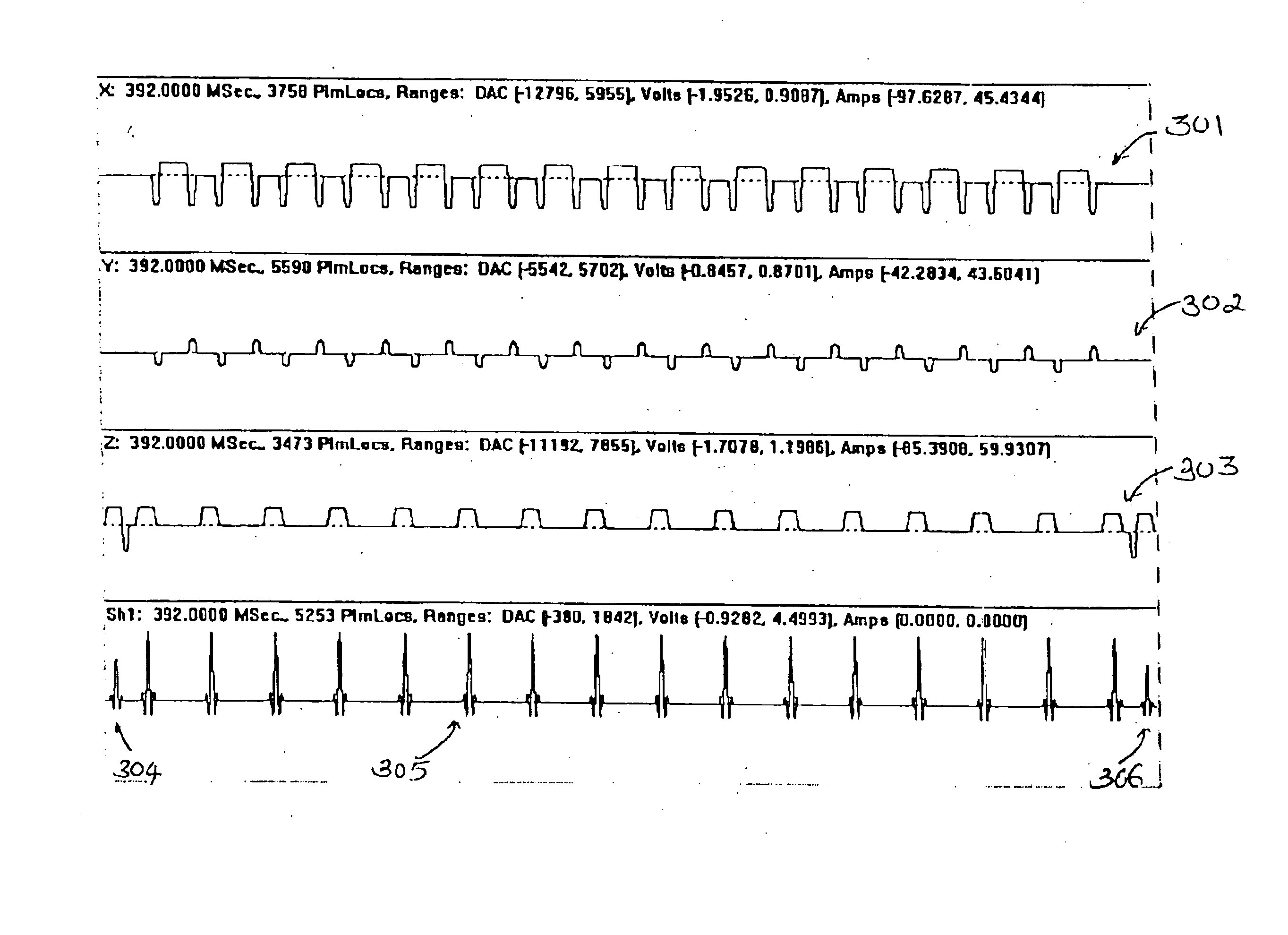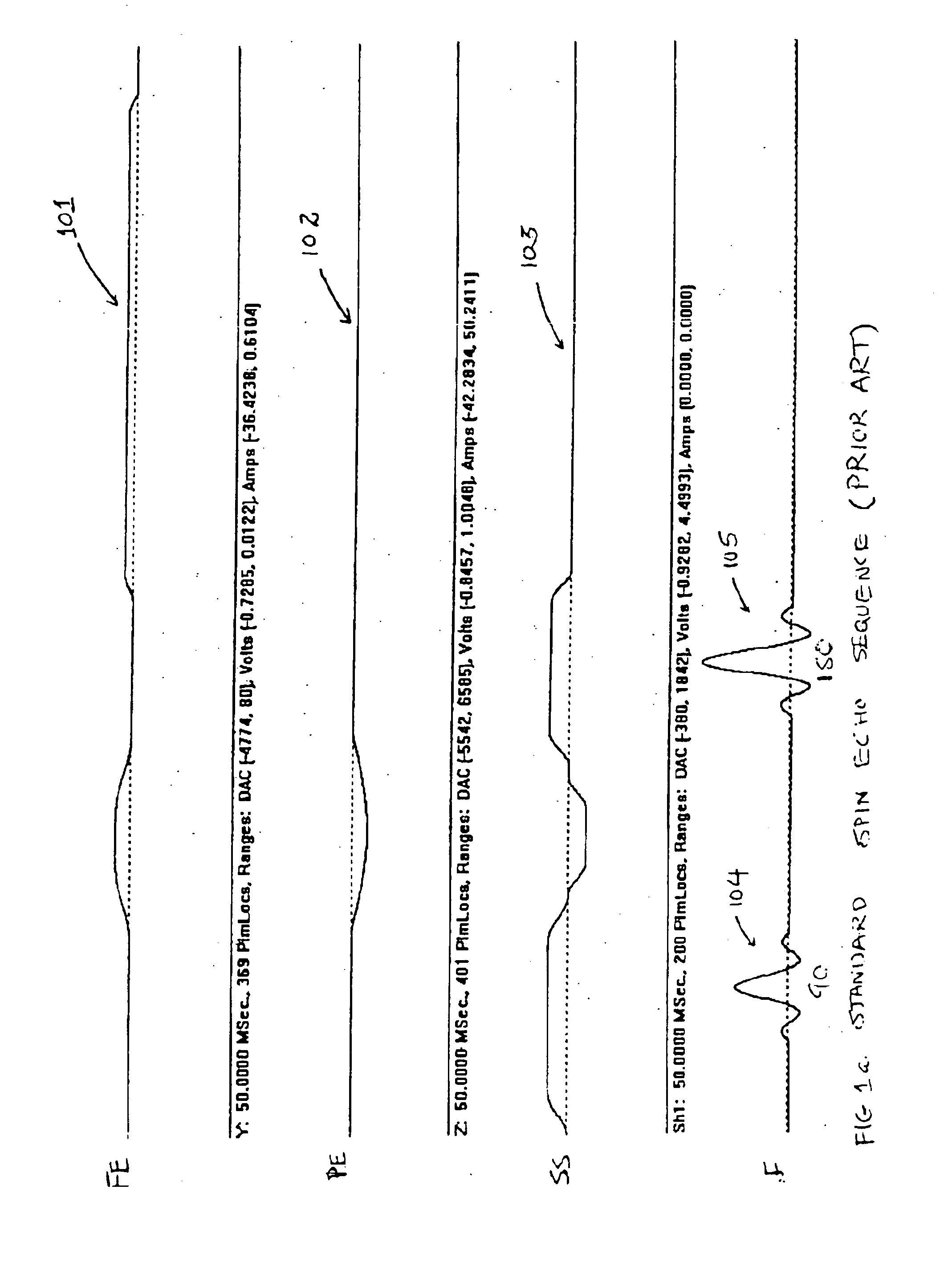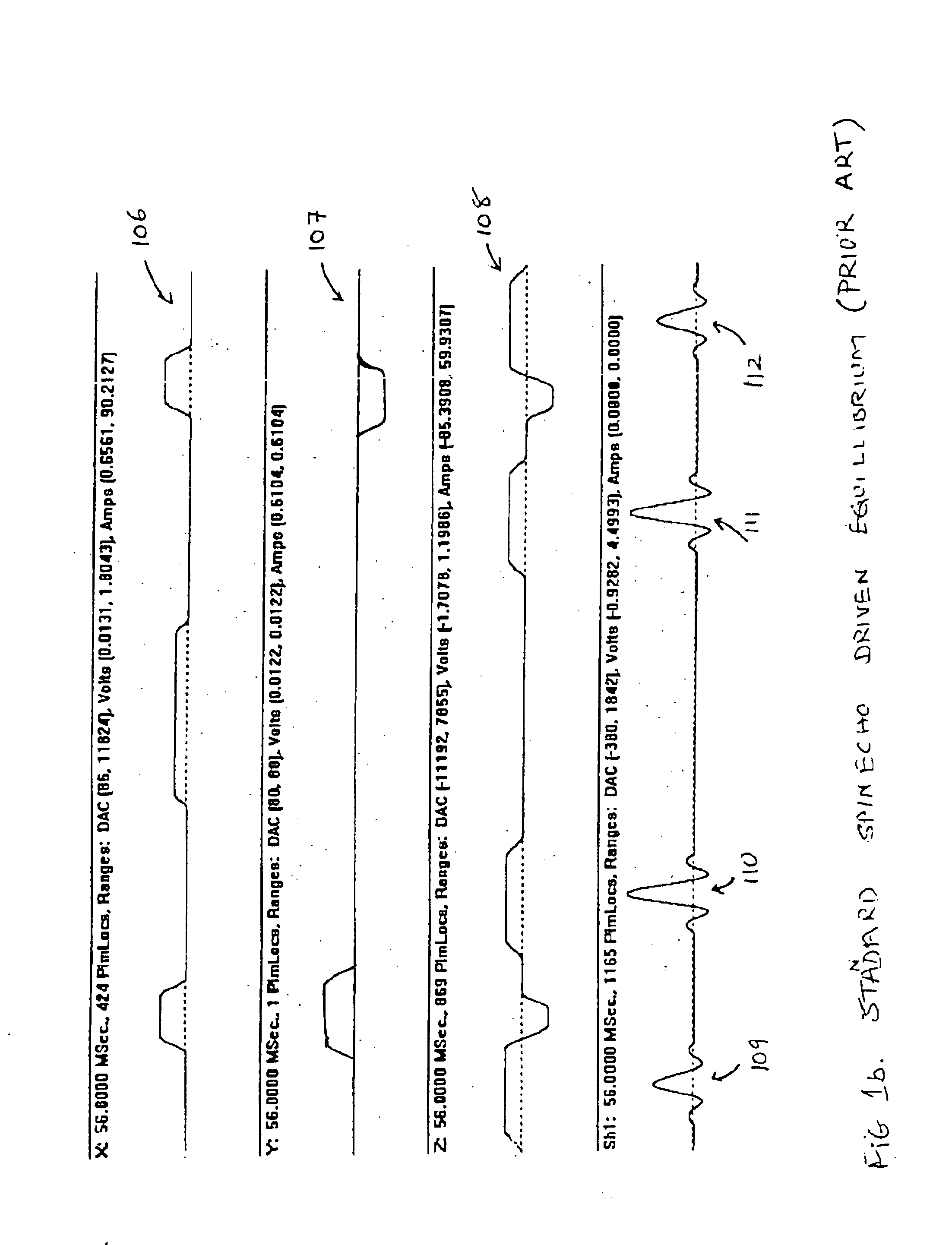Driven equilibrium and fast-spin echo scanning
a technology of driven equilibrium and fast spin, applied in the direction of reradiation, measurement using nmr, instruments, etc., can solve the problems of increasing the number of scans of patients that must be performed and the time necessary to complete such scans, increasing the time necessary for medical nmr imaging and patient throughput, etc., to achieve the effect of reducing the time period between scans and faster acquisition of image data
- Summary
- Abstract
- Description
- Claims
- Application Information
AI Technical Summary
Benefits of technology
Problems solved by technology
Method used
Image
Examples
Embodiment Construction
As noted above, in a conventional spin-echo imaging process, data is collected following the 180-degree RF pulse. Prior to each acquisition, the phase-encoding gradient is stepped according to the conventional spin warp imaging technique. The diagnostic information corresponding to each step of phase-encoding gradient represents a line in the k-space (kx, ky). Once the k-space is filled, a two-dimensional Fourier transform would provide the necessary information to reconstruct an image. A single spin-echo pulse sequence is shown in FIG. 1a. As shown, the sequence includes X, Y, and Z gradients 101, 102, 103, and 90-degree and 180-degree RF pulses 104, 105. The single echo sequence can be expanded to a multi-echo sequence by adding a number of subsequent 180-degree pulses. The time gap between the 180-degree pulses is twice that between the 90-degree pulse and the first 180-degree pulse. This train of 180-degree pulses produces echoes at the center of those RF pulses. The T2 dependen...
PUM
 Login to View More
Login to View More Abstract
Description
Claims
Application Information
 Login to View More
Login to View More - R&D
- Intellectual Property
- Life Sciences
- Materials
- Tech Scout
- Unparalleled Data Quality
- Higher Quality Content
- 60% Fewer Hallucinations
Browse by: Latest US Patents, China's latest patents, Technical Efficacy Thesaurus, Application Domain, Technology Topic, Popular Technical Reports.
© 2025 PatSnap. All rights reserved.Legal|Privacy policy|Modern Slavery Act Transparency Statement|Sitemap|About US| Contact US: help@patsnap.com



